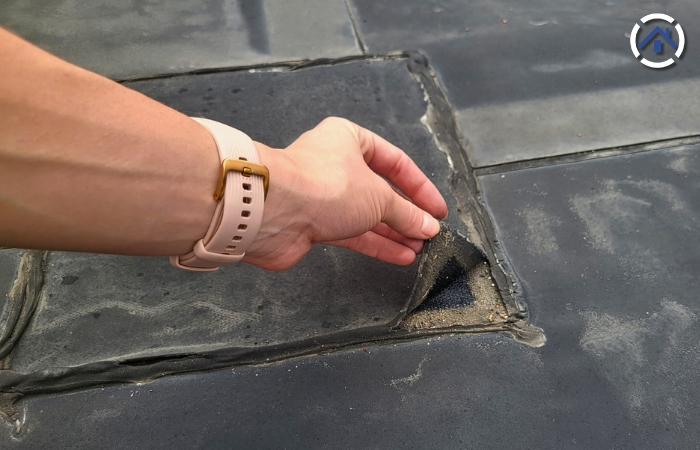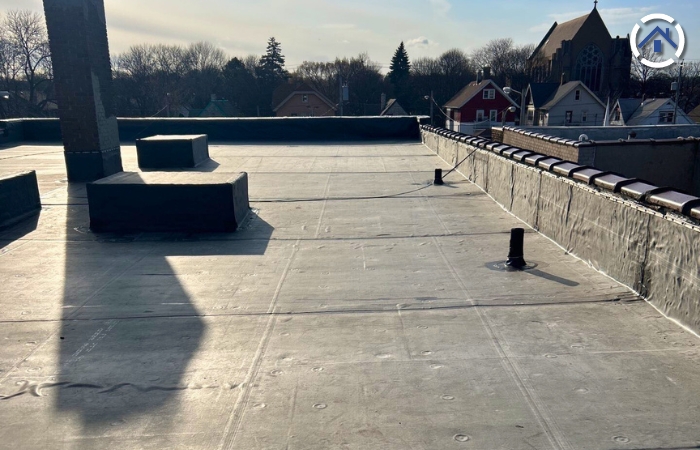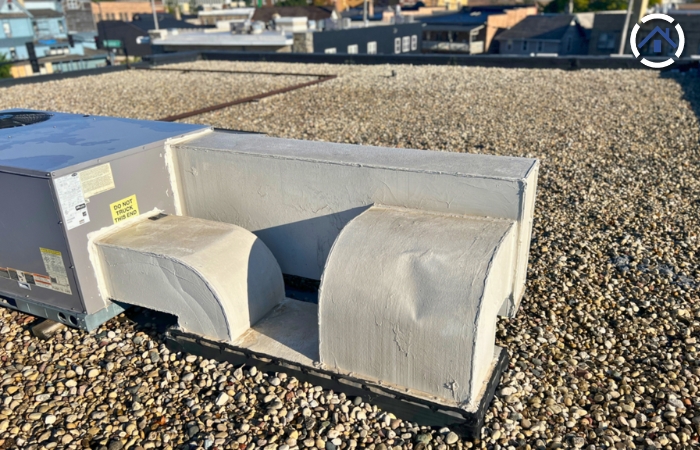
Flat roofs, characterized by their nearly horizontal or low-sloped design, are widely favored for their versatility, modern aesthetic, and cost-effectiveness. They're commonly seen on both commercial and modern residential buildings, providing ample space, accommodating features like HVAC units and solar panels, and allowing for creative architectural designs.
Property owners must grasp the common reasons why flat roofs fail to prevent potential leaks, structural issues, and expensive repairs. By recognizing these issues early on, property stakeholders can take proactive steps to extend the lifespan of their roofs, preserve property value, and ensure the safety and comfort of occupants.

Pooling water, also known as ponding water, refers to water that accumulates on the roof and does not drain off. This issue is particularly prevalent in flat roofs due to their minimal slope, which makes it difficult for water to naturally run off the surface.
What to Look For?
Implications of Pooling Water:
Bubbling or blistering is a common issue on flat roofs, occurring when air or moisture becomes trapped beneath the roofing material. This trapped air or moisture causes the material to lift and form bubbles or blisters on the surface of the roof. These bubbles can vary in size and severity, ranging from small, isolated blisters to larger, more widespread areas of bubbling. While initially cosmetic in nature, prolonged exposure to the elements can exacerbate the problem, leading to further deterioration of the roofing material.
What to Look For?
What Are the Implications?

Seams are the joints where two sections of roofing material meet on flat roofs. Despite their importance, they are vulnerable to damage and are common sources of leaks. Factors like temperature fluctuations, UV radiation, and foot traffic can weaken seams over time, leading to cracks or separation. Regular inspection and maintenance are crucial to address seam issues promptly and prevent water infiltration into the building.
What to Look For:
What Are the Implications?
Implementing these preventive measures and best practices can effectively protect your flat roof from common issues and prolong its lifespan.
1. Hiring Qualified Professionals:
Ensuring that your flat roof is designed and installed by qualified professionals is crucial. Experienced roofing contractors understand the complexities of flat roof systems and can properly assess your building's requirements. They can recommend suitable materials, design effective drainage solutions, and ensure that the roof is installed according to industry standards.
2. Importance of Following Building Codes and Standards:
Adhering to building codes and standards is essential for a successful flat roof installation. These regulations are in place to ensure the safety and structural integrity of buildings. Compliance with building codes helps to prevent common issues such as inadequate drainage, improper flashing installation, and insufficient insulation.
3. Effective Drainage Solutions:
There are various drainage systems available for flat roofs, including internal drains, scuppers, gutters, and downspouts. Each system has its advantages and is suitable for different roof configurations and climates. Properly designed and installed drainage systems prevent water accumulation and help to extend the lifespan of the roof.
4. Regular Inspection and Cleaning:
Regular inspection and cleaning of drainage systems are essential for maintaining their effectiveness. Debris, such as leaves, dirt, and twigs, can accumulate in gutters and drains, causing blockages and impeding water flow. Regular cleaning ensures that water can freely drain off the roof, reducing the risk of ponding and leaks.
5. Using Weather-Resistant Materials:
Selecting weather-resistant materials for your flat roof is key to protecting it from the elements. Materials such as PVC, TPO, and EPDM rubber are known for their durability and ability to withstand harsh weather conditions, including UV exposure, temperature fluctuations, and heavy rainfall.
6. Installing Protective Coatings:
Applying protective coatings to the roof surface can enhance its weather resistance and prolong its lifespan. Coatings act as a barrier against moisture, UV radiation, and other environmental factors that can degrade roofing materials. They also provide added strength and flexibility to the roof membrane, reducing the risk of damage from thermal expansion and contraction.
7. Choosing Durable Materials:
When selecting materials for your flat roof, prioritize durability and longevity. Consider factors such as the material's resistance to UV radiation, flexibility, and ability to withstand extreme weather conditions. Investing in high-quality materials upfront can save you money in the long run by reducing the need for frequent repairs and replacements.
8. Routine Maintenance With Experts:
While some maintenance tasks can be performed by building owners or facility managers, others are best left to trained professionals. Hiring experienced roofing contractors ensures that maintenance tasks are carried out correctly and safely. Professional regular maintenance also provides an opportunity for thorough inspections and expert recommendations to keep your flat roof in optimal condition.

By recognizing common issues such as pooling water, seam failures, and material degradation, property owners can take proactive steps to prevent costly damage and ensure the longevity of their flat roof systems. Regular maintenance, proper installation, and adherence to building codes are crucial in mitigating risks and preserving the integrity of flat roofs.
Moreover, seeking advice from roofing experts is essential for thorough inspections, accurate assessments, and informed decision-making. Consulting with experts can ultimately save time, money, and stress by addressing concerns promptly and effectively, thus safeguarding the investment and ensuring the long-term performance of flat roofs.